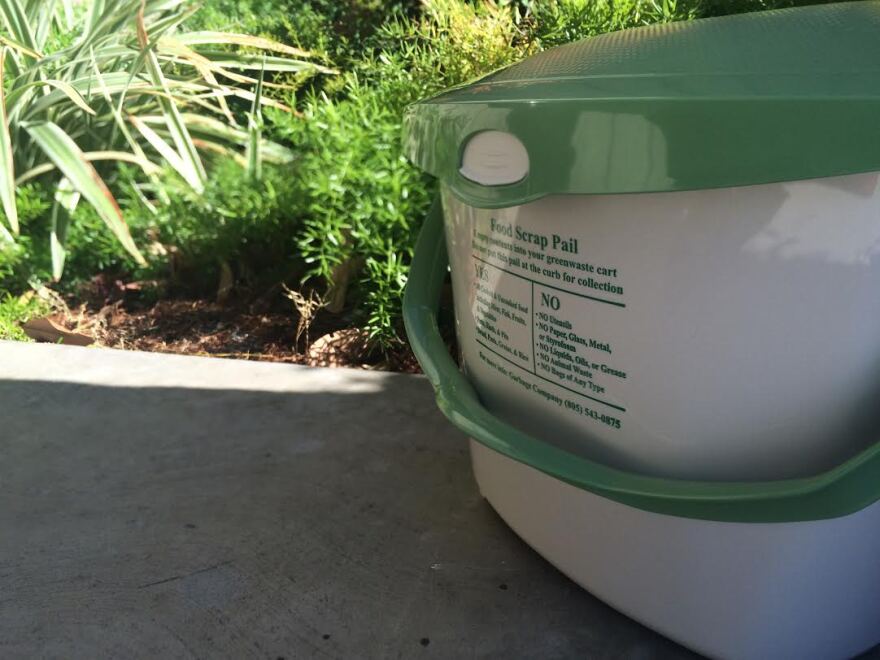A new food recycling program is starting Monday here on the Central Coast. You’ll be able to put food directly into the green yard waste bins if you have them. Patti Toews from the San Luis Obispo Integrated Waste Management Authority is here to talk with us about it.
NOTE: This transcript is from an interview that was edited for time purposes.
Bree Zender: So how will this program run?
Patti Toews: Everybody south of the grade--and that’s about 50,000 people--are going to receive containers. And this little countertop container, you get it free from your hauler, you place it on your counter, scrape your food scraps off into that container. When that container’s full, take it out to your green bin, dump it into your green bin, boom. You’re done. That’s it. You’re just putting what you would put into your gray garbage container into your green container. It’s simple, it’s easy, it’s seamless.
Zender: Now how did this come to be?
Toews: Well it’s really important that people understand that it is legislative-driven. But at the same time, we’ve known for years that sending your food to landfills is not a good idea. And the reason it is not a good idea is because of air pollution. When you send your food to the landfill, it causes methane gas. Methane gas is highly toxic. If we want to clean up our air, a simple way to do that is to pull our food out of the landfill, and to compost it. And then we can turn it into nutrient-rich soil, put it back into the ground, grow healthy vegetables, give it our local farmers and restaurants, and give schools access to great soil, which means great food, which means less chemicals. I mean, it’s just a full circle. You can see where I’m going with this.
Zender: Right. Methane gas in landfills, is that a big problem around here?
Toews: It’s a huge problem globally. It’s sort of what I call ‘the dirty little secret.’ You know, we throw our food away or it’s in the garbage. It’s out of sight, out of mind. But it really isn’t. It does ferment. It does produce that methane gas. So that’s why we need to get that out of the landfill and into some sort of composting system. So that we can collect that gas, and use it for beneficial electricity. And at the same time, the compost is nutrient-rich. It retains more water so we don’t have to use so much water in our farms and gardens. It’s a great win-win all the way around.
Zender: Is there any food that can’t be recycled?
Toews: Well you know, we even take meats and bones. But what we’d like to stay away from is because of the transportation issues are fats and liquids. You can imagine when a garbage truck comes and compresses the weight. It squeezes out all of the liquids. You don’t want to be the car going down the road going behind that truck dripping liquids.
Zender: Can you explain the process of how you take this food and turn it into compost?
Toews: What we’re moving towards in an anaerobic, totally self-contained digester. And what happens in that self-contained digester is that we bring in these food scraps from your green bin, the first 14 days inside this enclosure it ferments. That’s when we collect all the methane gas. And turn it into electricity. Which by the way, will service electricity for 600 houses in San Luis Obispo. After that 14 days, that’s when we make that nutrient-rich compost. At the end of that process, we’re sending it right back to our local farms. It’s not going out of the county.


